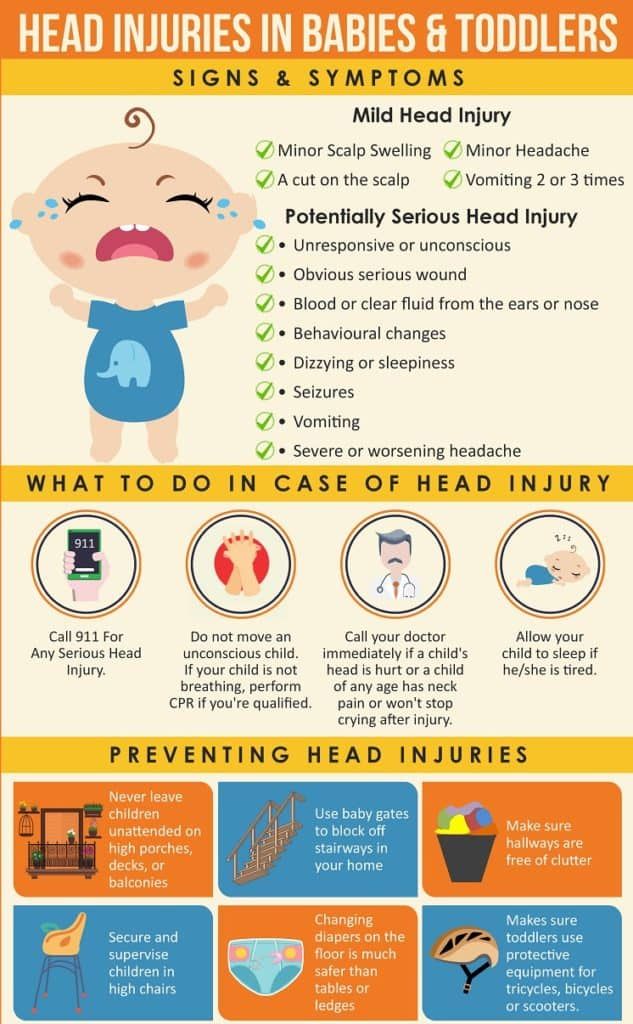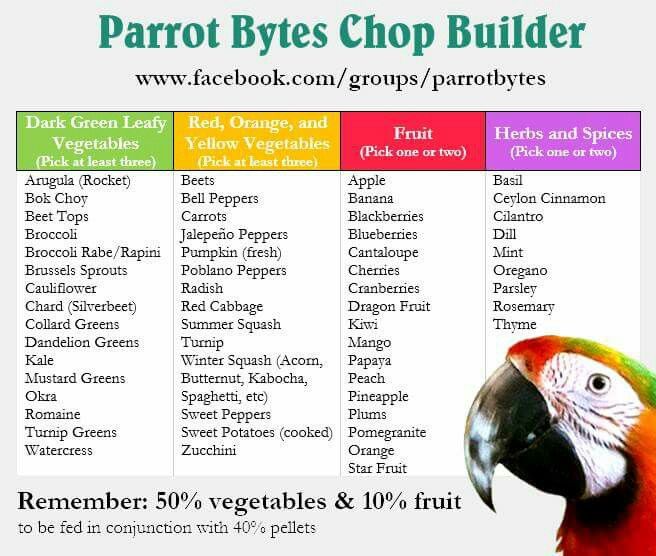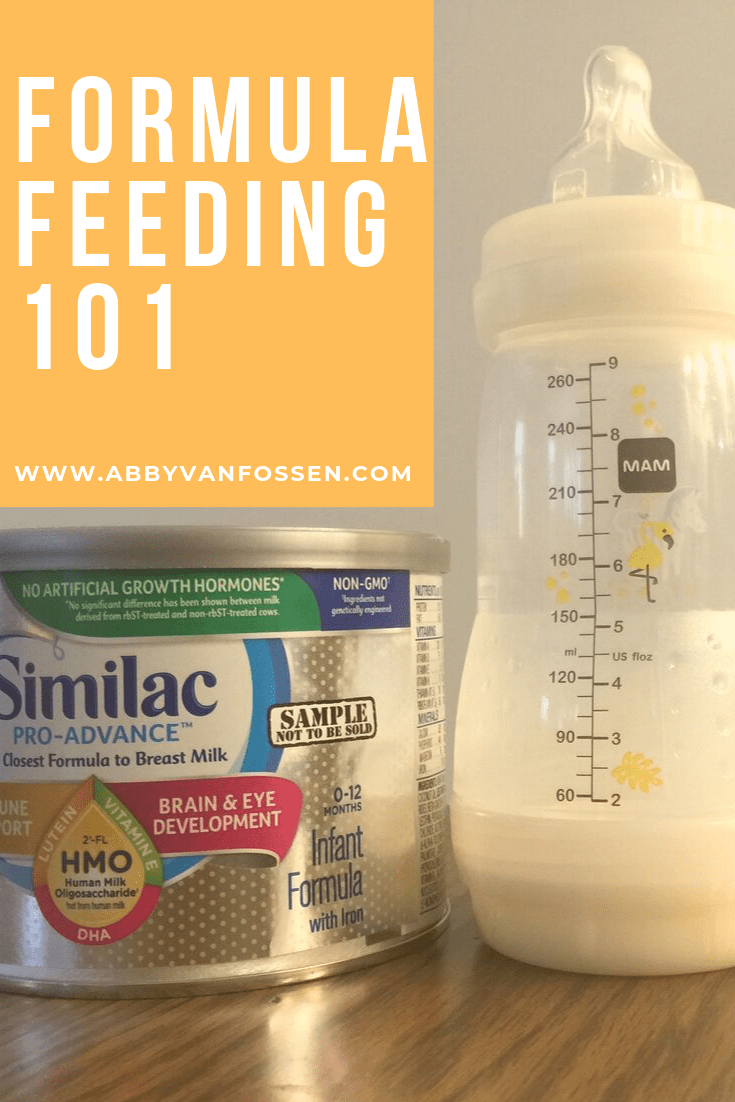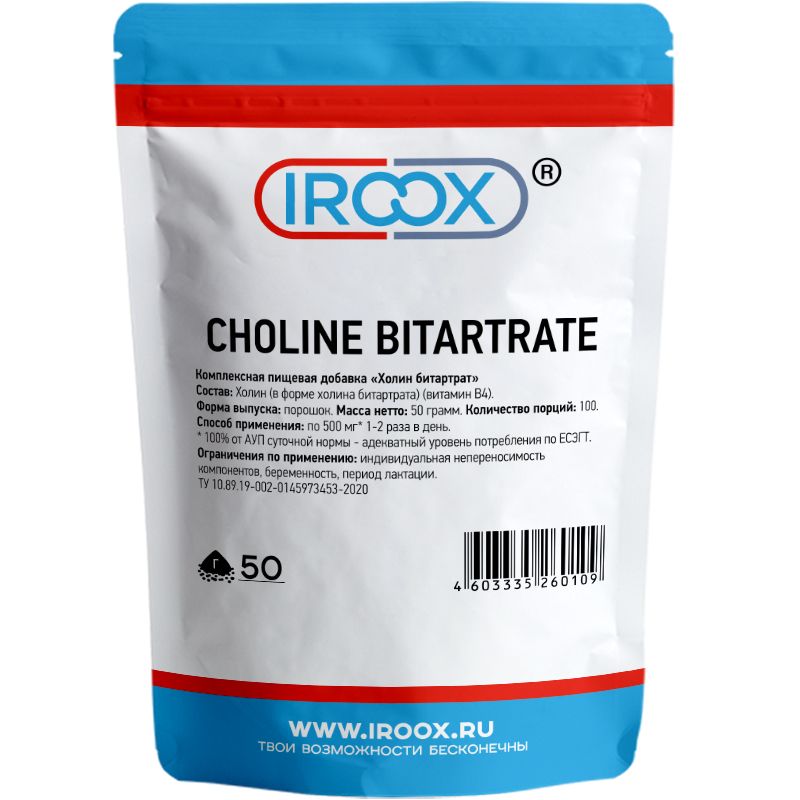Start feeding baby real food
When, What, and How to Introduce Solid Foods | Nutrition
For more information about how to know if your baby is ready to starting eating foods, what first foods to offer, and what to expect, watch these videos from 1,000 Days.
The Dietary Guidelines for Americans and the American Academy of Pediatrics recommend children be introduced to foods other than breast milk or infant formula when they are about 6 months old. Introducing foods before 4 months old is not recommended. Every child is different. How do you know if your child is ready for foods other than breast milk or infant formula? You can look for these signs that your child is developmentally ready.
Your child:
- Sits up alone or with support.
- Is able to control head and neck.
- Opens the mouth when food is offered.
- Swallows food rather than pushes it back out onto the chin.
- Brings objects to the mouth.
- Tries to grasp small objects, such as toys or food.
- Transfers food from the front to the back of the tongue to swallow.
What Foods Should I Introduce to My Child First?
The American Academy of Pediatrics says that for most children, you do not need to give foods in a certain order. Your child can begin eating solid foods at about 6 months old. By the time he or she is 7 or 8 months old, your child can eat a variety of foods from different food groups. These foods include infant cereals, meat or other proteins, fruits, vegetables, grains, yogurts and cheeses, and more.
If your child is eating infant cereals, it is important to offer a variety of fortifiedalert icon infant cereals such as oat, barley, and multi-grain instead of only rice cereal. Only providing infant rice cereal is not recommended by the Food and Drug Administration because there is a risk for children to be exposed to arsenic. Visit the U.S. Food & Drug Administrationexternal icon to learn more.
How Should I Introduce My Child to Foods?
Your child needs certain vitamins and minerals to grow healthy and strong.
Now that your child is starting to eat food, be sure to choose foods that give your child all the vitamins and minerals they need.
Click here to learn more about some of these vitamins & minerals.
Let your child try one single-ingredient food at a time at first. This helps you see if your child has any problems with that food, such as food allergies. Wait 3 to 5 days between each new food. Before you know it, your child will be on his or her way to eating and enjoying lots of new foods.
Introduce potentially allergenic foods when other foods are introduced.
Potentially allergenic foods include cow’s milk products, eggs, fish, shellfish, tree nuts, peanuts, wheat, soy, and sesame. Drinking cow’s milk or fortified soy beverages is not recommended until your child is older than 12 months, but other cow’s milk products, such as yogurt, can be introduced before 12 months. If your child has severe eczema and/or egg allergy, talk with your child’s doctor or nurse about when and how to safely introduce foods with peanuts.
How Should I Prepare Food for My Child to Eat?
At first, it’s easier for your child to eat foods that are mashed, pureed, or strained and very smooth in texture. It can take time for your child to adjust to new food textures. Your child might cough, gag, or spit up. As your baby’s oral skills develop, thicker and lumpier foods can be introduced.
Some foods are potential choking hazards, so it is important to feed your child foods that are the right texture for his or her development. To help prevent choking, prepare foods that can be easily dissolved with saliva and do not require chewing. Feed small portions and encourage your baby to eat slowly. Always watch your child while he or she is eating.
Here are some tips for preparing foods:
- Mix cereals and mashed cooked grains with breast milk, formula, or water to make it smooth and easy for your baby to swallow.
- Mash or puree vegetables, fruits and other foods until they are smooth.

- Hard fruits and vegetables, like apples and carrots, usually need to be cooked so they can be easily mashed or pureed.
- Cook food until it is soft enough to easily mash with a fork.
- Remove all fat, skin, and bones from poultry, meat, and fish, before cooking.
- Remove seeds and hard pits from fruit, and then cut the fruit into small pieces.
- Cut soft food into small pieces or thin slices.
- Cut cylindrical foods like hot dogs, sausage and string cheese into short thin strips instead of round pieces that could get stuck in the airway.
- Cut small spherical foods like grapes, cherries, berries and tomatoes into small pieces.
- Cook and finely grind or mash whole-grain kernels of wheat, barley, rice, and other grains.
Learn more about potential choking hazards and how to prevent your child from choking.
Top of Page
Solids, Finger Foods, and More
Written by Gina Shaw
In this Article
- Baby Milestone 1: When They Can Start Solids
- Baby Milestone 2: When They’re Ready to Move From Puree to Chunks
- Baby Milestone 3: When They Can Sit in a High Chair
- Baby Milestone 4: When They Can Manage Finger Foods
- Baby Milestone 5: When They Start Using Spoons
- Baby Milestone 6: When They Can Try Highly Allergenic Foods
- Baby Milestone 7: When They Can Drink Water
- Baby Milestone 8: When They Can Completely Feed Themselves
There are many milestones that need to be achieved when a baby is ready to start to eat solid foods. Here are some of the big ones.
Here are some of the big ones.
Baby Milestone 1: When They Can Start Solids
Most pediatricians, and the American Academy of Pediatrics, recommend introducing solid foods to babies when they are between ages 4 and 6 months. That’s when they start to lose the “tongue-thrust reflex” or extrusion reflex, which is important for sucking the breast or bottle when they are younger, but interferes with feeding. Babies at this point can also lift their heads up independently and hold their necks high.
If your baby is around this age, can sit up well with support, and shows interest in the foods they see you eating, it’s probably a good time to venture into feeding your baby solid food. If your baby is exclusively breastfed, it is recommended that you wait until they are 6 months to start solids.
Baby Milestone 2: When They’re Ready to Move From Puree to Chunks
“Chunking up” babies’ food is a process -- obviously, they shouldn’t go straight from rice cereal to raisin bran.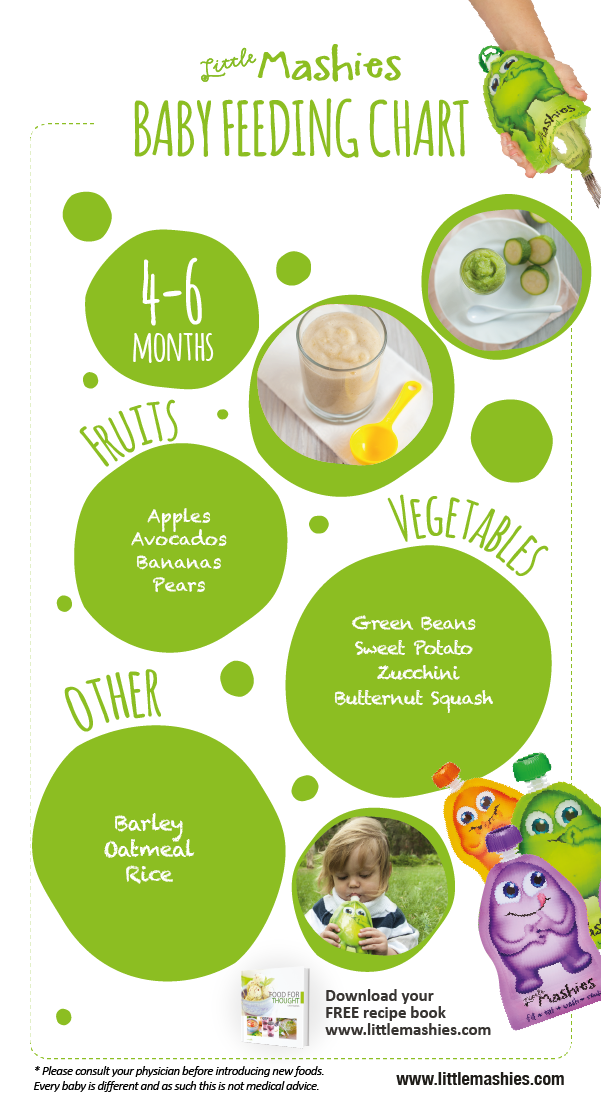 But after the first few weeks of adjusting to eating rather than just drinking their food, your baby should be ready to handle a little more texture in solid foods.
But after the first few weeks of adjusting to eating rather than just drinking their food, your baby should be ready to handle a little more texture in solid foods.
Introduce new textures slowly. Good starters are mashed bananas or mashed avocados. You can also use the “staged” store-bought baby foods -- going from the smooth puree of stage 1 to the slightly thicker stage 2 and then the chunkier stage 3 by around 9 months of age. (Babies don’t necessarily have to have a lot of teeth to handle more texture in their foods -- they can often gum soft foods very well!)
Baby Milestone 3: When They Can Sit in a High Chair
When babies are ready to eat solid foods, they can sit upright with support and hold up their head and neck. They're capable of sitting in a high chair! That's a serious milestone, but you'll need to follow these safety rules: Always buckle a baby into their chair for safety, even if they are unable to get out with the tray in place. As they get older and become more active, they may be able to squirm out. It is a good habit to buckle a child as soon as you place them in their chair -- even if you think there's no chance they could fall out or climb out. You may get distracted for a moment, which happens really easily when we are trying to do a million things at once!
It is a good habit to buckle a child as soon as you place them in their chair -- even if you think there's no chance they could fall out or climb out. You may get distracted for a moment, which happens really easily when we are trying to do a million things at once!
Baby Milestone 4: When They Can Manage Finger Foods
Babies between ages 7 and 11 months usually tell you they’re ready to eat more grown-up foods by trying to grab them from you. Almost any food that is healthy and nutritious and has a soft texture makes a good finger food, if it’s cut small enough: diced pasta; small pieces of well-cooked vegetables such as carrots, peas, or zucchini; and pea-sized bites of chicken or soft meat. Small, unsweetened round cereals and cereal puffs are also a good choice. Avoid feeding your baby grapes, hot dogs (even cut up), nuts, and hard candy, as they are choking hazards.
At first babies “rake” food into their hand, but soon they develop the “pincer grasp” that allows them to pick up small objects between thumb and forefinger.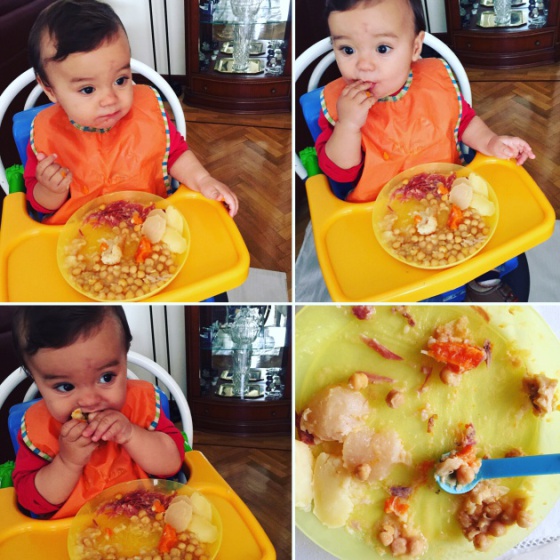 At that point, your baby can become a pro at self-feeding, so encourage finger foods and let your baby explore!
At that point, your baby can become a pro at self-feeding, so encourage finger foods and let your baby explore!
Baby Milestone 5: When They Start Using Spoons
Almost as soon as babies adjust to being fed with a spoon, they'll want to hold and grab the spoon themselves and put it in their mouths. That doesn't mean they're graceful, of course.
Most babies don’t learn to use a spoon effectively until after their first birthday, but let a younger baby who’s interested give it a whirl for practice. Try giving them a soft-tipped spoon to hold while you feed them with another. They can get used to holding the spoon themselves and will also be distracted from grabbing yours.
When you think they are ready to actually navigate the spoon into their mouth, try thicker, stickier foods like yogurt, mashed potatoes, or cottage cheese. Another tip: Put some cream cheese on the spoon and then a few pieces of O-shaped cereal on top. The cream cheese won’t fly everywhere, and the baby can get the experience of actually getting the cereal into their mouth.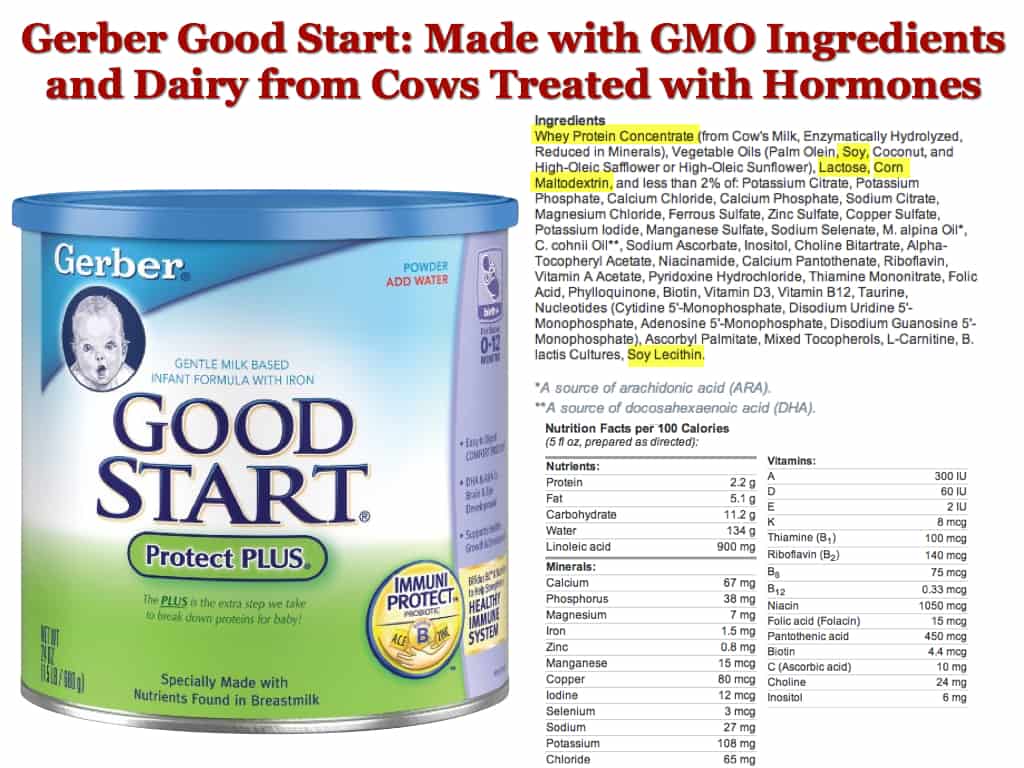
Expect a mess! Use a plastic or other waterproof bib, and put a mat under the high chair to make cleanup easier.
Baby Milestone 6: When They Can Try Highly Allergenic Foods
Some pediatricians still recommend waiting until children are at least age 1 before offering them certain foods that are considered highly allergenic, like eggs or fish. But current research doesn’t demonstrate any benefit to waiting past a certain age to introduce these foods, unless you have a significant family history of food allergies or other reasons to believe your baby may be predisposed to them.
There is no evidence that introducing highly allergenic foods to children under age 1 makes them any more likely to be allergic to them, and the American Academy of Pediatrics (AAP) now says it’s fine to give these foods before the baby's first birthday. Many pediatricians are still very cautious about shellfish and peanuts, however, because allergic reactions to these foods can be particularly dangerous.
Baby Milestone 7: When They Can Drink Water
Babies don't need water during their first 6 months of life. They get all the water they need from breast milk or baby formula. Babies under age 6 months should not be given any water at all, because it’s easy to fill up their tiny stomachs -- and they should be filling up on the nutrients they receive from the milk to grow. Once they start eating mostly solid foods, around age 9 months, they can start water with meals using a sippy cup.
If your older baby shows an interest in water that you’re drinking, there’s no harm in letting them have a few sips. Just don’t let it replace the nutritious breast milk or formula they should be getting.
Baby Milestone 8: When They Can Completely Feed Themselves
Mastering eating with utensils is a long process. Most babies do not become really skilled at it until they are well past their first birthday. Encourage your child to practice safely, and again, be prepared for a little mess. (How else will you get the “oatmeal in the hair” pictures that will embarrass them years later?)
(How else will you get the “oatmeal in the hair” pictures that will embarrass them years later?)
The right diet for teenagers: what and how best to feed schoolchildren | 74.ru
A child will easily refuse school food, but you can fix it
Photo: Aleksey Volkhonsky / V1.RU
Share
Is your child okay with his grades? And what about nutrition? If for the last six months, thanks to quarantine, you have been able to control it, then from September 1, the student’s menu is a lottery. Together with nutritionists, we check how to properly feed children and adolescents and what foods should be in the diet. nine0009
The main rule that must be followed when compiling a schoolchild's diet is balance. The menu of children and adolescents should contain all macronutrients, proteins, fats and carbohydrates in the right proportions. The norms developed by the World Health Organization help us to make the right proportion.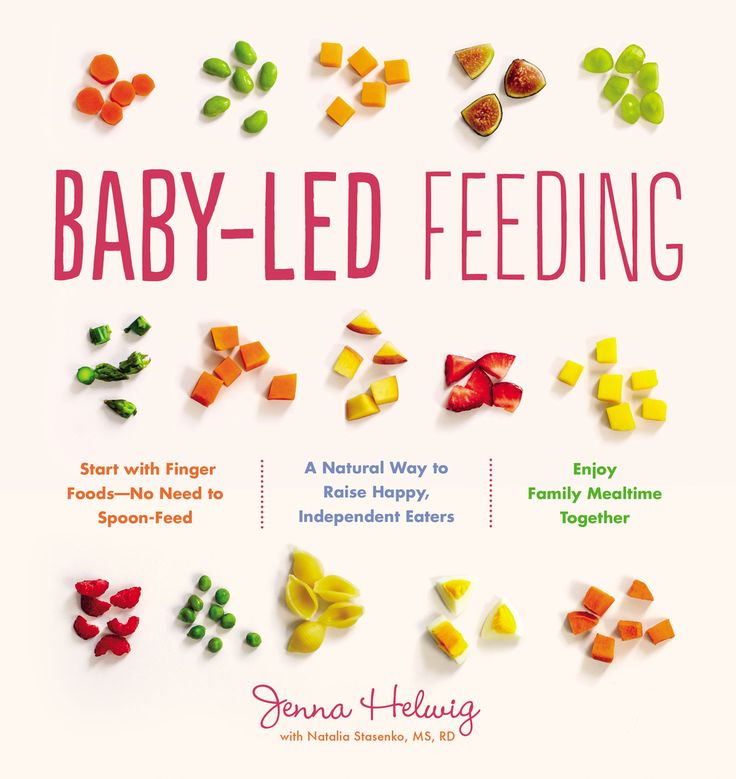 It is better to calculate an individual nutrition formula for a child with a specialist, but you can write down a list of healthy foods that must be present in the diet now. nine0009
It is better to calculate an individual nutrition formula for a child with a specialist, but you can write down a list of healthy foods that must be present in the diet now. nine0009
— Protein must be present in the child's diet. It is found in greater amounts in meat, fish, seafood, dairy products, eggs, nuts and legumes. Meat, fish, dairy products and eggs are more common foods for children, as they are present in the menu of kindergarten, school and are more often included in the main part of the home diet. So they are just the necessary minimum that, if possible, a child should receive, - says children's nutritionist Irina Pyshnaya. nine0009
Irina Pyshnaya — doctor, children's nutritionist, consultant in the correction of eating behavior.
Children get used to meat, fish, dairy products and eggs from a very young age
Photo: Dmitry Gladyshev / Network of city portals (infographics)
Share
The next component is fat.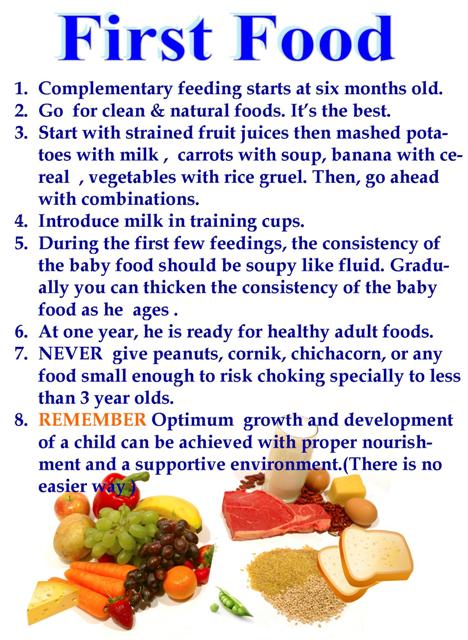 Fats of both animal and vegetable origin should be present in the children's diet. The former are found in meat, fish and dairy products, the latter in vegetable oil, avocados and nuts. By adding butter, vegetable oil and fatty fish containing omega-3 and omega-6 fatty acids to the student’s menu, you will close the minimum threshold for the child’s need for fats. nine0009
Fats of both animal and vegetable origin should be present in the children's diet. The former are found in meat, fish and dairy products, the latter in vegetable oil, avocados and nuts. By adding butter, vegetable oil and fatty fish containing omega-3 and omega-6 fatty acids to the student’s menu, you will close the minimum threshold for the child’s need for fats. nine0009
And the last macronutrient that the diet cannot do without is carbohydrates. This is the main source of energy, which should be supplied in sufficient quantities, but not in excess. This is important for maintaining a normal weight.
If there are too many carbohydrates, they will turn into a fatty layer
Photo: Dmitry Gladyshev / Network of city portals (infographics)
Share
are set individually, taking into account the age, physical development, health and taste preferences of the child. nine0009
When choosing protein foods for school meals, experts recommend giving preference to lean meat (beef tenderloin, veal, chicken breast and turkey breast, rabbit), but you can eat any fish - the one you like best, because any fish has healthy fats .
The cooking method plays a big role. Regardless of whether the child has weight problems or not, it is better to cook, stew, bake, steam or in a slow cooker food. Try to use less vegetable oil and a frying pan. In cooking, you can use natural seasonings, salt in moderation (or soy sauce) or prepare homemade sauces: with lemon juice, with tomato paste or tomatoes, on kefir or yogurt with greens. nine0009
— It is better to divide dairy products into two groups: quality and dessert. High-quality “milk” includes those products that contain more protein, less unnecessary fats and sugar: cottage cheese up to 9% fat, sour cream up to 20%, cream, kefir, unsweetened yogurt, cheese, explains Irina Pyshnaya. — Dessert dairy products — sweet yoghurts, curd mass 23% fat, curd glazed curds with milk fat substitutes. The amount of these foods in the diet should be controlled, like sweets. nine0009
As for eggs, it is better to eat them no more than once a day, as this is not an easy product, and the issue of its content in the diet is decided individually. The method of preparation also matters - it is better to boil than to fry in a pan in vegetable oil.
The method of preparation also matters - it is better to boil than to fry in a pan in vegetable oil.
Another important component of children's and adolescent diets is carbohydrates. And their most faithful sources are porridge. Choose those that saturate for a long time: buckwheat, oatmeal, millet, barley, barley, bulgur, brown, brown, wild rice. And read our review about the benefits of different types of cereals. nine0003
- More useful is brown, unpolished, wild rice, which retains its shell. It is rich in vitamins of groups B, PP, E, carotene, silicon. In addition, rice also contains lecithin and does not contain gluten, which is important for those who have an intolerance to it. Also, it is not in buckwheat porridge, which is considered a good source of proteins and carbohydrates, contains B vitamins, zinc, iron, copper, magnesium and calcium, explains dietitian Irina Toropygina. - But you need to understand that porridge is not a side dish, but a separate product that is better not to be abused.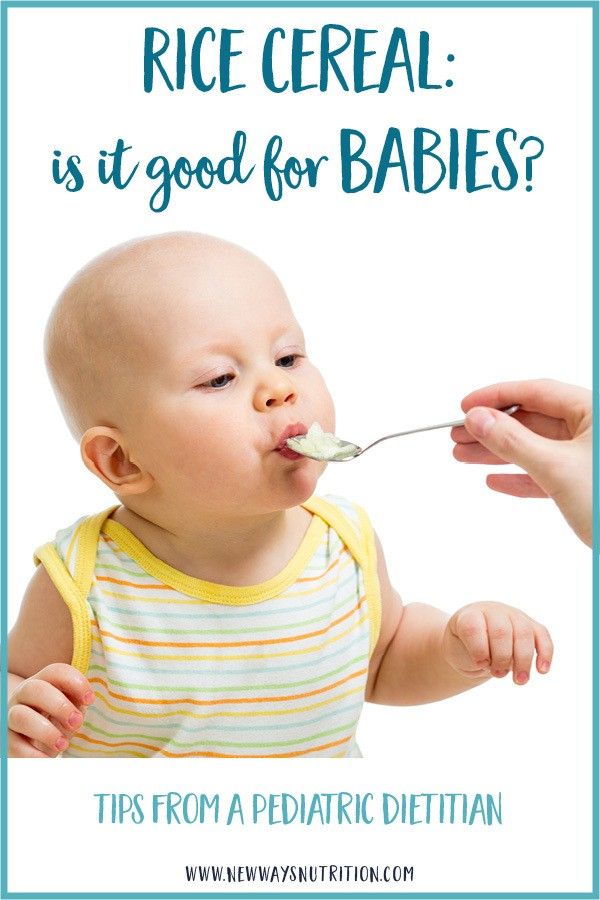 It is desirable to use it in the morning, for breakfast. Porridge can be consumed several times a week, preferably on days of physical activity. Because these are carbohydrates, and in order to spend them, some kind of load is needed. For breakfast, you can combine porridge with protein - yogurt, cottage cheese, cheese. nine0003
It is desirable to use it in the morning, for breakfast. Porridge can be consumed several times a week, preferably on days of physical activity. Because these are carbohydrates, and in order to spend them, some kind of load is needed. For breakfast, you can combine porridge with protein - yogurt, cottage cheese, cheese. nine0003
Irina Toropygina — dietitian of the highest category, specialist in DNA testing, areas of work: diagnosis and identification of the causes of overweight or underweight, development of an individual diet for the treatment of obesity and overweight, nutritional support for various eating disorders.
Do not forget about fruits in the children's diet. Take the ones that the child likes, but consider their number.
Fruit maximum for each child - 250 grams per day
Photo: Dmitry Gladyshev / Network of city portals (infographics)
Share
— Fruit is sugar.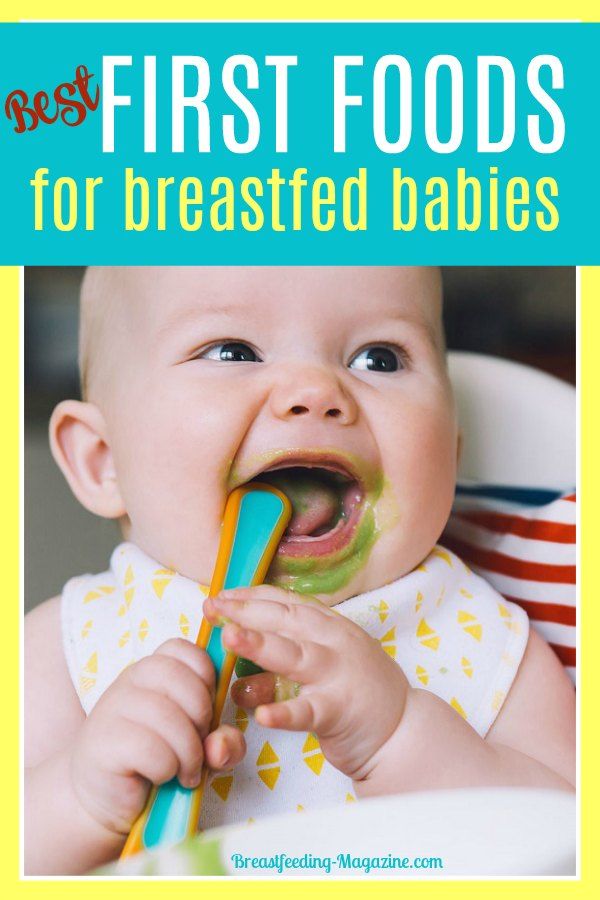 Sugar is a provocation of the pancreas to release insulin. The more sugar in the diet, the more frequent the release. The more likely it is to acquire a state of insulin resistance, including those extra pounds. Part of the unused energy sugar, neatly “decomposed” by insulin into cells, turns into fats and is stored in reserve,” says Irina Pyshnaya. - Among vegetables, it is worth focusing on fresh vegetables - more "complex" fiber. nine0009
Sugar is a provocation of the pancreas to release insulin. The more sugar in the diet, the more frequent the release. The more likely it is to acquire a state of insulin resistance, including those extra pounds. Part of the unused energy sugar, neatly “decomposed” by insulin into cells, turns into fats and is stored in reserve,” says Irina Pyshnaya. - Among vegetables, it is worth focusing on fresh vegetables - more "complex" fiber. nine0009
All the vegetables listed here are the best source of fiber
Photo: Dmitry Gladyshev / City Portals Network (infographics)
Share
— Let's start with the fact that compote can be prepared in different ways. You can use sweet syrups for cooking, add a glass of sugar there, and then compote or fruit drink will not be inferior to juice in terms of calories and insulin response. Therefore, if you prefer compotes and fruit drinks for your child, cook them correctly! As little sugar as possible in the recipe, as many fresh berries or dried fruits as possible. And then you can definitely say that you are giving a healthy drink, - says Irina Pyshnaya. nine0009
And then you can definitely say that you are giving a healthy drink, - says Irina Pyshnaya. nine0009
Juice is also different: packaged and freshly squeezed. Both of them are sugar. A glass of freshly squeezed juice (200 ml) contains the juice of at least four fruits, and a glass of packaged juice contains fruit concentrate and sugar, equal in amount to that of natural sugars in freshly squeezed juice. In both cases, the amount of sugar is large. Just think: even an adult cannot afford to eat four oranges at a time, but drinking their juice (sweetness) in one gulp is easy! Be careful: for a child, a glass of juice for the day is for the eyes. It is better to give it every other day or once a week, so as not to provoke the taste buds to get used to the sweet taste, and the pancreas to a sharp release of insulin. nine0009
According to sanitary and epidemiological requirements, it is not allowed to repeat the same foods in the school ration on the same day or in the next two days. When the child is in school, it may still be possible to do this, but if it is distance learning, it turns out that parents need to cook different meals every day. But the set of necessary products is relatively small. To make it easier for adults to organize the child's nutrition, it is enough to always keep a minimum supply in the kitchen: meat and fish in the freezer, cereals, vegetables and fruits, fresh dairy products and eggs. And get ready to make preparations. nine0009
When the child is in school, it may still be possible to do this, but if it is distance learning, it turns out that parents need to cook different meals every day. But the set of necessary products is relatively small. To make it easier for adults to organize the child's nutrition, it is enough to always keep a minimum supply in the kitchen: meat and fish in the freezer, cereals, vegetables and fruits, fresh dairy products and eggs. And get ready to make preparations. nine0009
— Cut fish, meat into pieces of 100-150 grams. Put them in separate bags (you can make cutlets) and freeze. In this case, getting one piece of meat (cutlet), putting it in a double boiler and preparing a fresh dinner for the child will not be difficult, recommends Irina Pyshnaya. - Cereals and vegetables just need to be in the kitchen. Their preparation does not take much time. If desired, you can also make preparations for soup or second courses with vegetables (fried vegetables - frying or sauce, dressings for soups). nine0009
nine0009
Different serving of dishes will help to expand the diet. For example, one day for breakfast you serve a boiled egg with a whole grain bread sandwich with vegetables, herbs and a piece of lightly salted salmon. The next day, you also lay an egg in the basis of breakfast, just cook an omelet with milk, mushrooms and green beans. The list of products is slowly growing, the diet is becoming more diverse. Don't take on everything at once. Start small and gradually build up the pace. If the child’s breakfast is strictly defined (porridge or a boiled egg with a sandwich), leave it as he likes. Get busy with lunch and new soup recipes. One new soup recipe a week will be enough. As soon as this recipe takes root in the main menu of the child, proceed to the next one. nine0009
It would be ideal to get the school menu in hand and prepare homemade meals with this information in mind. But in most cases this is not possible. So parents have to move blindly. But you can always talk to your child and find out what they had for lunch at school, and adjust as you go.
- Ask him what he eats from the school menu and write it down. Often there is a situation when a child eats either one or the other. For example, "I eat breakfast, I don't eat lunch." “I eat buckwheat, but the cutlet is tasteless.” Or "I'm eating sausage, and the pasta is stuck together in a lump." “I drink tea, but I don’t eat a bun - I’m on a diet.” This information, firstly, will help you get to know your child better - this is never superfluous. You will learn about his taste preferences: what he recognizes and what he does not. And based on these data, you can adjust the home menu so that the overall diet is complete and balanced. For example, if you tracked that the child categorically refuses to eat meat at school, add it to the home menu. Do not count on the fact that he will eat something there sometime, - says Irina Pyshnaya. nine0009
If your child does not eat at school, make arrangements with them to either eat a prepared snack after school or wait for a full meal. This is a very insidious time when a student can eat a lot of useless 500-calorie foods and knock down all his appetite. This mechanism is one of the most gross nutritional errors, and if repeated systematically, it can lead to a failure in eating behavior. So much so that a child can reach adulthood, but the habit cannot be abandoned.
This is a very insidious time when a student can eat a lot of useless 500-calorie foods and knock down all his appetite. This mechanism is one of the most gross nutritional errors, and if repeated systematically, it can lead to a failure in eating behavior. So much so that a child can reach adulthood, but the habit cannot be abandoned.
The child is small: what to do? | Publishing House AST
1. Offer the same food that you eat yourself.
Children are always very interested in the food their parents eat. Thousands of years of evolution have shaped the attitude in children: I eat what my environment eats. If others do not eat this food, it may be poisonous. From the point of view of eating behavior, even a sample from the parent's plate of not the healthiest food is better than food prepared separately for the child. nine0003
2. Eat with your child.
Food, in addition to survival, has a social function. Many families have the opportunity to spend time together only during joint meals. It is important for children to feel part of the family, to be involved in the family. By placing a child at a separate table, arranging feedings at an unusual time for the rest of the family (especially if there is only one child in the family), we isolate him from the family, depriving him of the opportunity to observe and copy.
It is important for children to feel part of the family, to be involved in the family. By placing a child at a separate table, arranging feedings at an unusual time for the rest of the family (especially if there is only one child in the family), we isolate him from the family, depriving him of the opportunity to observe and copy.
Food, in addition to survival, has a social function. Many families have the opportunity to spend time together only during joint meals. It is important for children to feel part of the family, to be involved in the family. By placing a child at a separate table, arranging feedings at an unusual time for the rest of the family (especially if there is only one child in the family), we isolate him from the family, depriving him of the opportunity to observe and copy. nine0003
3. Start with yourself.
If you want to generate interest in a certain product, eat it yourself, regularly, with pleasure. Offer it to your child in the form of a clearly distinguishable piece: if it is a fish, then not in the form of a 10-ingredient-in-one casserole, but in the form of a separate and understandable piece of fish.
For children 2-4 years old, dishes with clearly distinguishable ingredients are important, from which they can choose “I eat this” and “I don’t want this”. Distinguishable components are an incentive to choose “what I love”. nine0003
4. Be patient.
As much as we would like to change everything at the snap of our fingers, dietary adjustments can take a long time - from several weeks to several months.
“Tuning” the diet is like tuning a musical instrument, delicate and almost jewelry work. Attempts to “adjust” with a hammer or twist the strings harder break the instrument. It takes up to three weeks for toddlers to accept a product on their plate, and as much or more to agree to try it. nine0003
If a child refuses once, do not give up trying, it is important to move smoothly and confidently along the chosen path. Your child will definitely resist change, this is normal.
Children are conservative by nature - it's easier to survive that way. Follow your mom, follow the rules, and everything will be fine. It is very easy for a child to get used to rituals and routines if this is repeated day after day.
Follow your mom, follow the rules, and everything will be fine. It is very easy for a child to get used to rituals and routines if this is repeated day after day.
When a child from the feeding period is persuaded, deceived, entertained, forced at the table - he gets used to it and is sure that it should be so. If a mother draws muzzles on porridge with jam and cuts out vegetables figuratively, the child gets used to it and considers this the norm. nine0003
All is well until suddenly mom decides “Enough! I won’t cut it, I’ll turn off the cartoon and I won’t persuade.”
Mom is easy to understand: she is tired of rituals. However, the kid cannot understand this: for him the world has turned upside down, the familiar environment has changed and the rituals have disappeared. He was not prepared for change, he was simply "driven out of the cave into the forest."
Feel like crying? No! I want to sob, scream, hide under the sofa and not get out until the familiar world returns.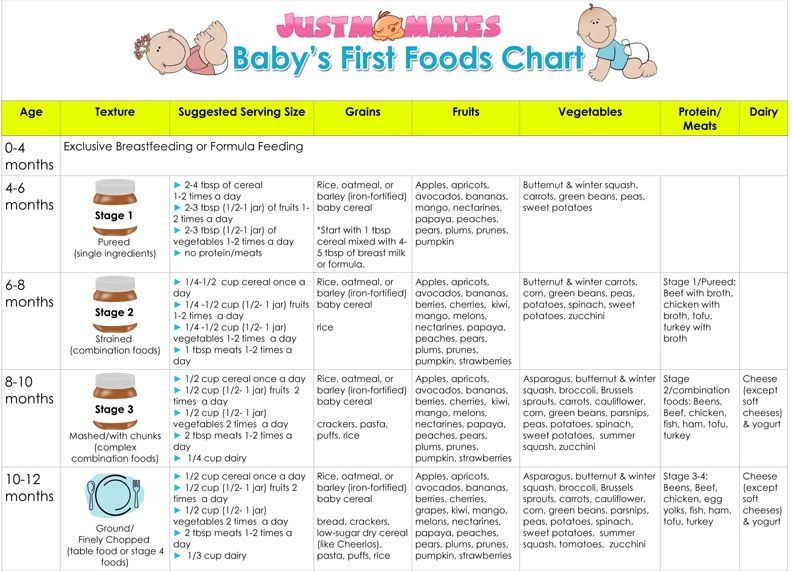 By his behavior, the baby reports: “Alarm, trouble, urgently save me!” In this state, he cannot perceive speech, suggestions and explanations, he needs to "become as it was." nine0003
By his behavior, the baby reports: “Alarm, trouble, urgently save me!” In this state, he cannot perceive speech, suggestions and explanations, he needs to "become as it was." nine0003
If you return the habitual (draw a face, cut it habitually, put it on your favorite plate), the child will understand that everything is fine.
Outwardly, it looks like a "demand and manipulation", and we begin to educate: do not give in, ignore, insist on our own. The child plunges into chronic stress, adrenaline and cortisol block the rudiments of appetite.
Looks like a hunger strike. Against this background, children can lose weight, sleep worse, get sick. The older our kid is, the more he protests. The smallest joyfully break away from the table and enjoy the fact that they are not persuaded, not forced, and generally released into the wild. Older children begin to suspect: what if what mom is doing is another attempt to feed me? Is this some sort of scam? nine0003
And the child protests. He protests about changing the usual rituals - he ate with cartoons all his life, and then they were turned off. The usual environment has changed - panic, return as it was. He protests about the introduction of new rituals: suddenly vegetables appeared on the table from somewhere, suddenly they stopped persuading, suddenly they allowed candy before soup. What's happening? I don't understand! If the child’s diet was sweet, then the body also protests: he suddenly stopped receiving quick nourishment, his mood deteriorates, and external changes do not allow eating other food. nine0003
He protests about changing the usual rituals - he ate with cartoons all his life, and then they were turned off. The usual environment has changed - panic, return as it was. He protests about the introduction of new rituals: suddenly vegetables appeared on the table from somewhere, suddenly they stopped persuading, suddenly they allowed candy before soup. What's happening? I don't understand! If the child’s diet was sweet, then the body also protests: he suddenly stopped receiving quick nourishment, his mood deteriorates, and external changes do not allow eating other food. nine0003
This is why children need long periods of adjustment to change their diet and feeding habits. We cannot bring down everything new that we have come up with, we need to give time to adapt to each change. For some, 2-3 days are enough, others need a week or a month to adopt new rules of the game, to stop suspecting and being afraid. The fewer changes that occur at one point in time, the more comfortable the child is to accept them and the less resistance.



